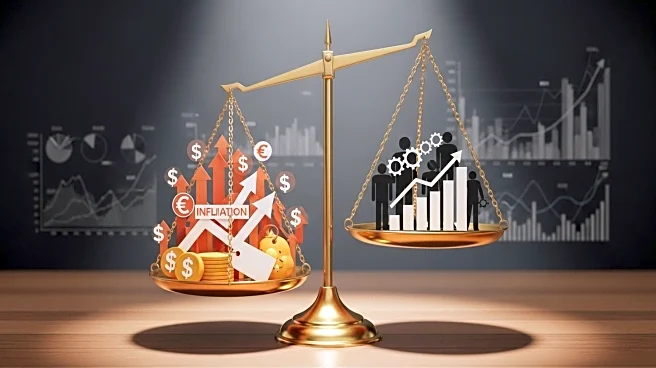What's Happening?
Federal Reserve Chair Jerome Powell has highlighted the dual challenges of rising inflation and a slowing labor market, describing the situation as 'challenging' for policymakers. Powell emphasized that current interest rates are well-positioned to address these threats, indicating no immediate need for aggressive rate cuts. The Fed recently lowered interest rates for the first time since December, sparking debate among policymakers about further cuts. Some officials advocate for aggressive rate reductions to protect the labor market, while others urge caution due to inflation concerns. The Fed's dual mandate of stable prices and maximum employment is under stress due to President Trump's tariffs, which are affecting prices and job growth.
Why It's Important?
The Fed's approach to interest rates is crucial for the U.S. economy, impacting inflation control and employment levels. The balance between these factors affects consumer spending, business investment, and overall economic growth. Aggressive rate cuts could stimulate the economy but risk exacerbating inflation, while cautious cuts might stabilize prices but leave the labor market vulnerable. The Fed's decisions will influence financial markets, borrowing costs, and economic confidence, with potential implications for global economic stability.
What's Next?
Investors anticipate further rate cuts by the Fed, with expectations of two more reductions by year-end. The Fed will continue to monitor economic indicators, including inflation and employment data, to guide its policy decisions. Policymakers face pressure from President Trump for more significant rate cuts, adding complexity to the Fed's independent decision-making process. The ongoing debate among Fed officials suggests continued scrutiny of economic conditions and potential adjustments to interest rates.











